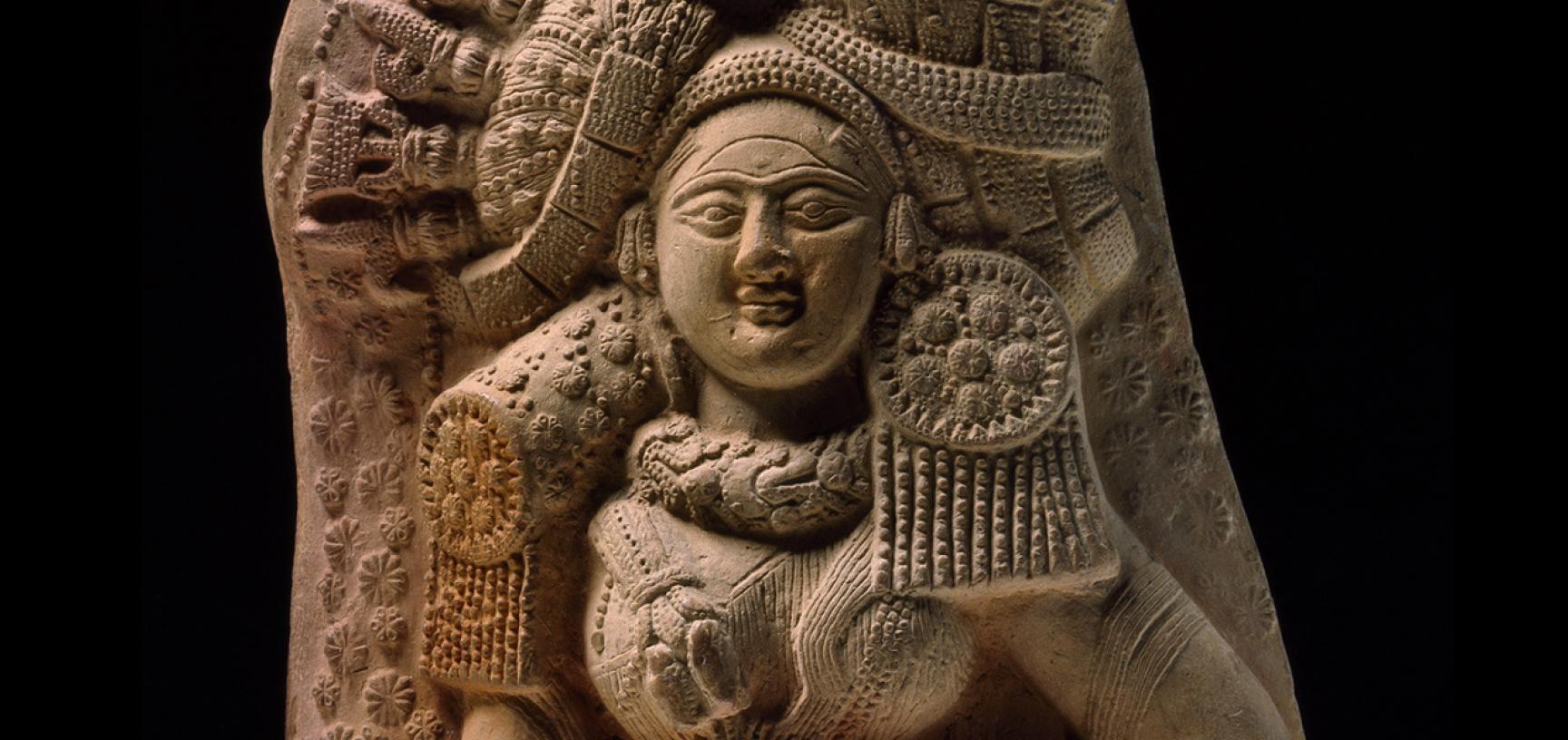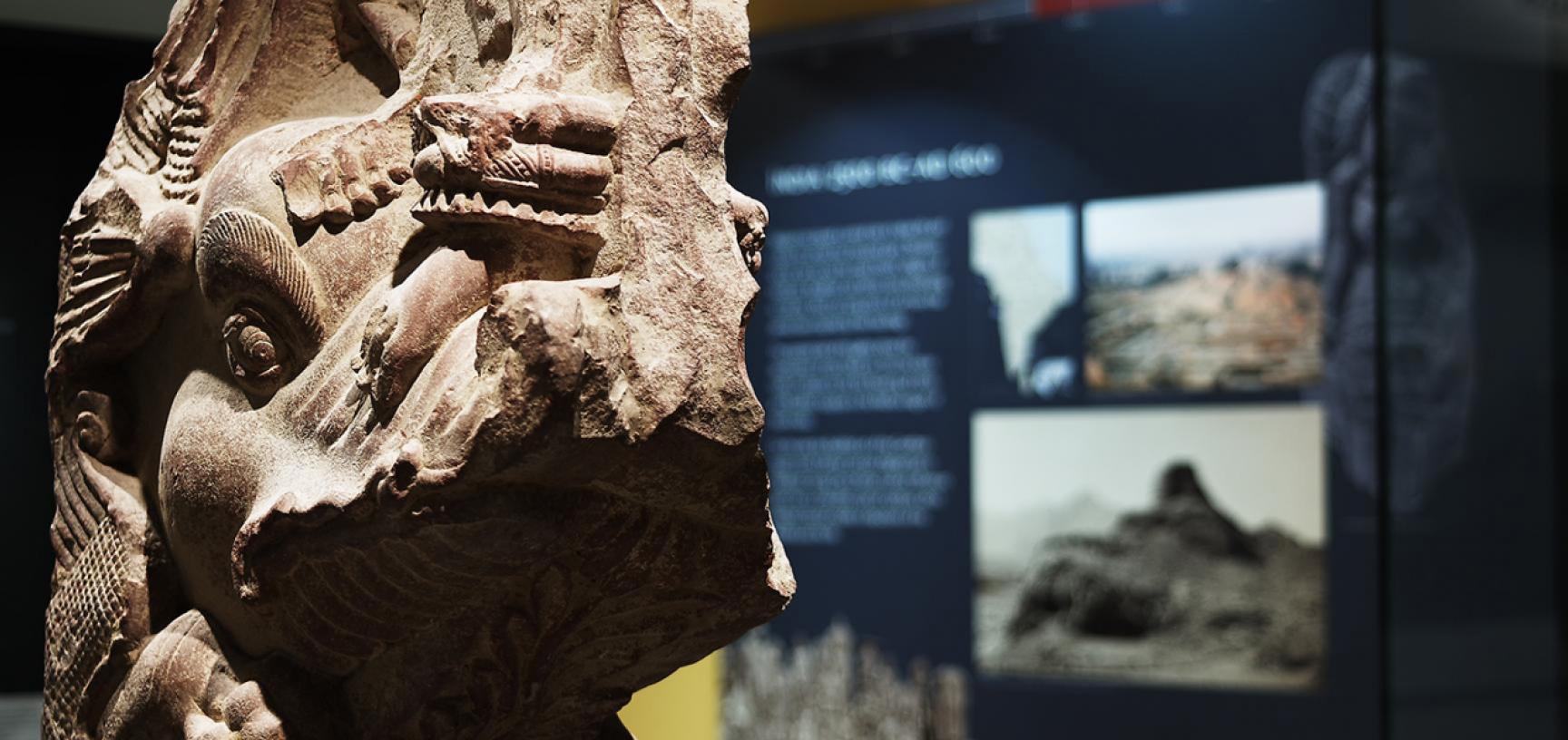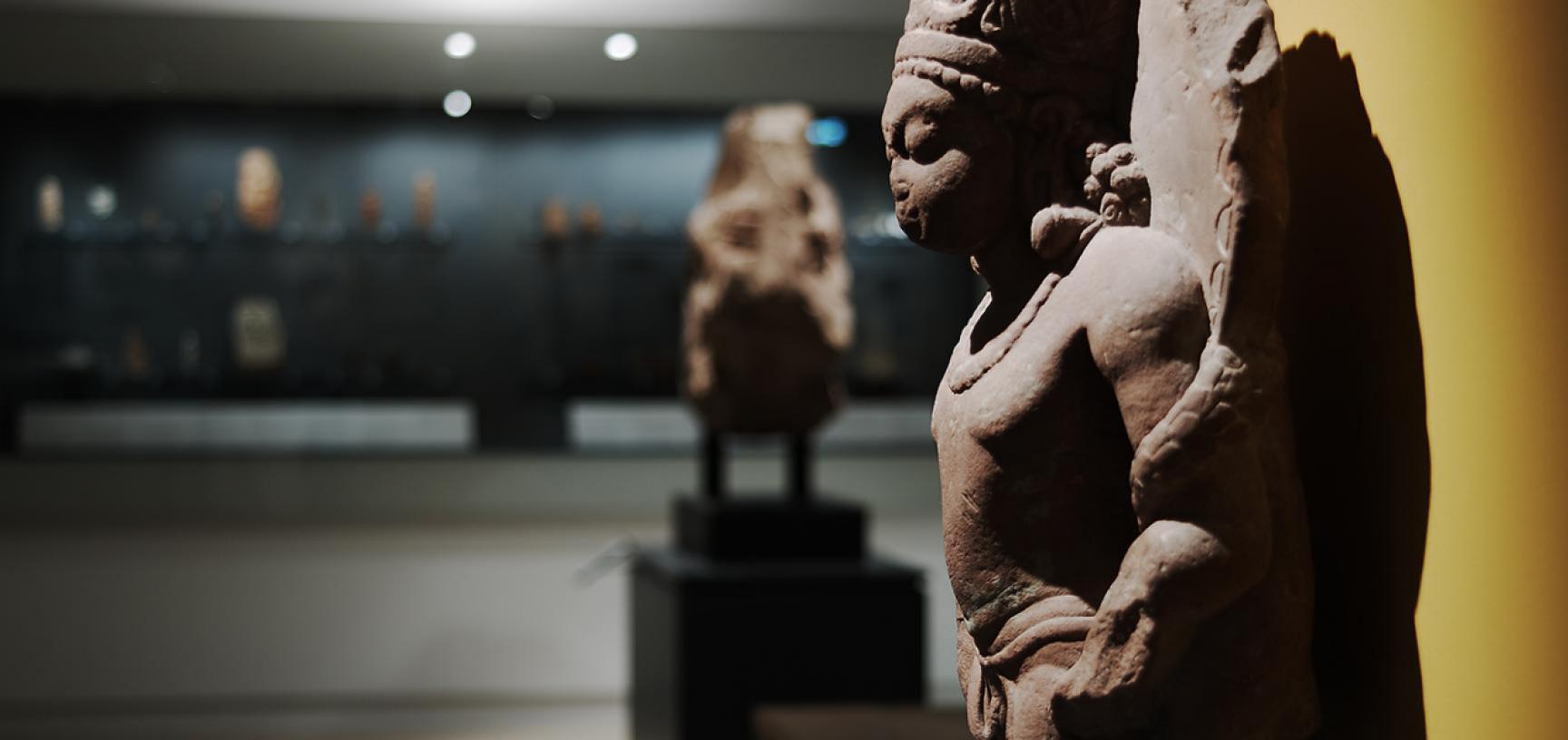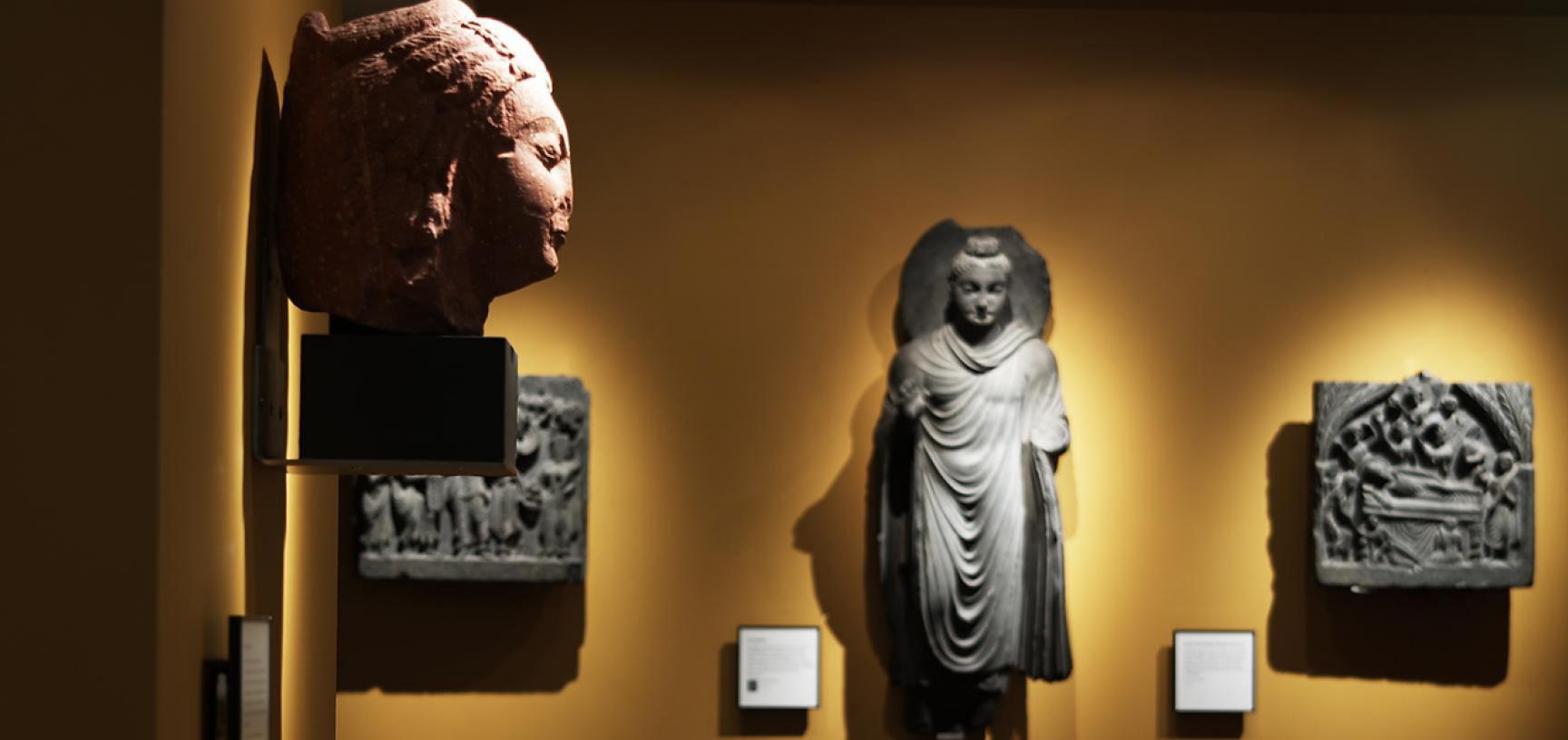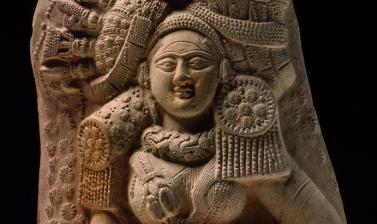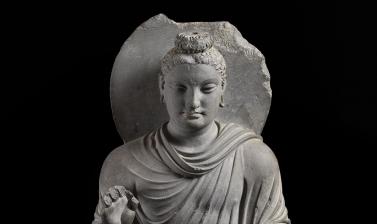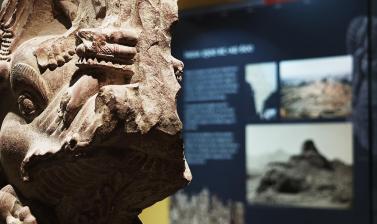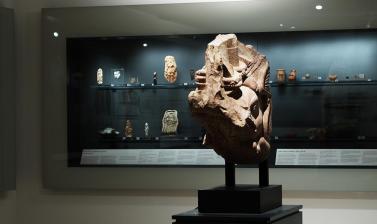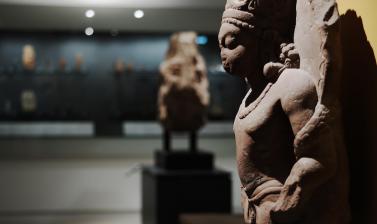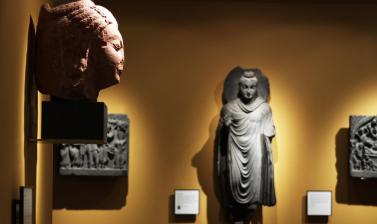INDIA TO AD 600
Located between the galleries of Rome and China, this gallery explores the early development of Indian art from the artefacts of the Indus Valley (discovered by archaeologists just over a century ago) to the Hindu and Buddhist scripture of North India and Gandhara
Religion has played a central role in Indian life and culture for at least 4,000 years. Between 500 BC and AD 500 the major historic religions of Hinduism, Buddhism and Jainism were developing to maturity and most surviving works of art from that period were inspired by their teachings.
This gallery shows the development of early Indian art, from the Indus Valley civilisation to the first flowering sculpture in the Mathura region of North India. It also surveys the Buddhist art of the Gandhara region (north Pakistan and East Afghanistan). Strong Greco-Roman cultural influences in the northwest gave rise to a naturalistic style of sculpture which adapted classical models in depictions of the Buddha and his life.
There are some interesting displays of coins including a selection from the Indo-Greek kingdom which formed after Alexander the Great led his army into the region in 327 BC.



